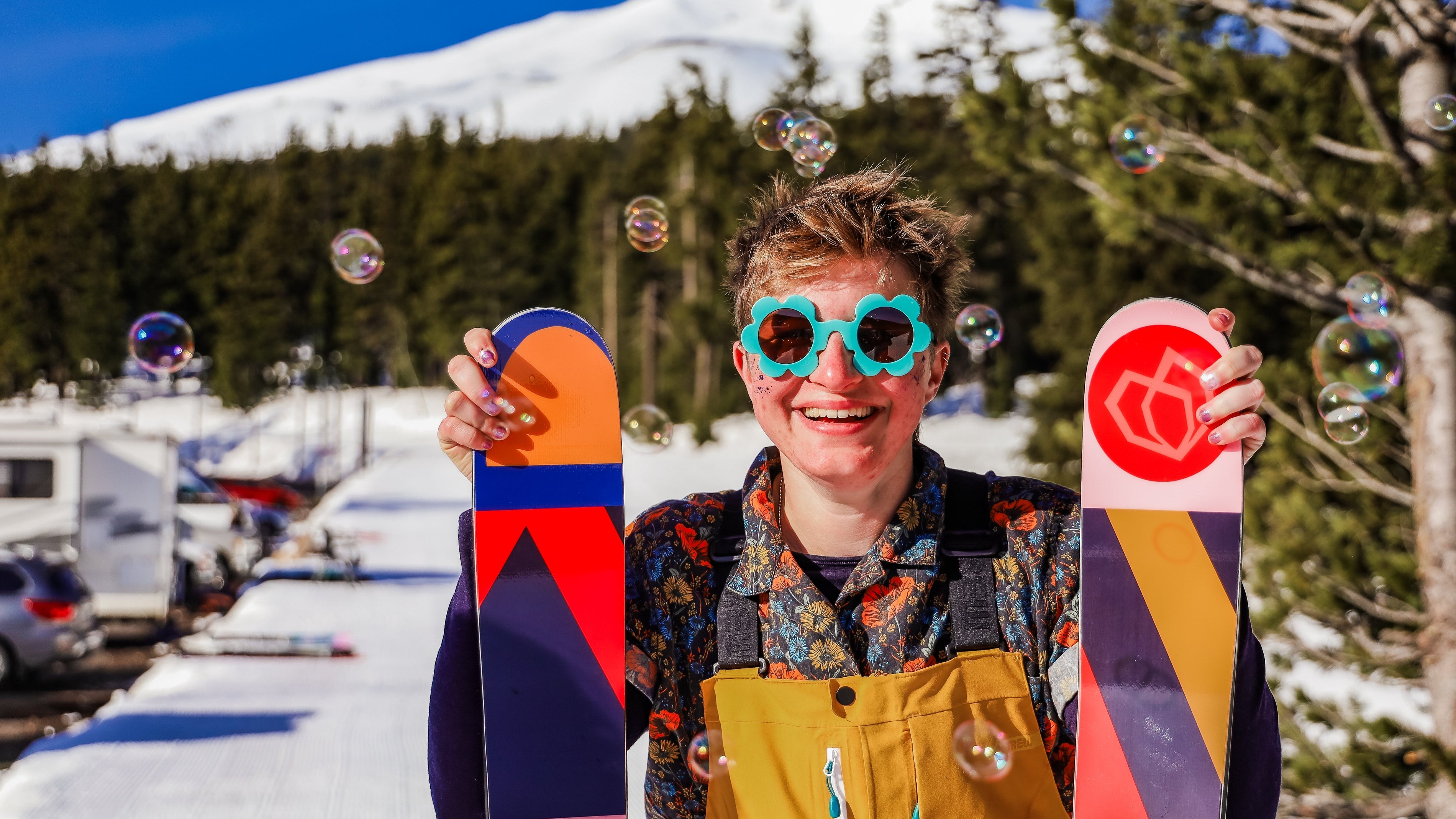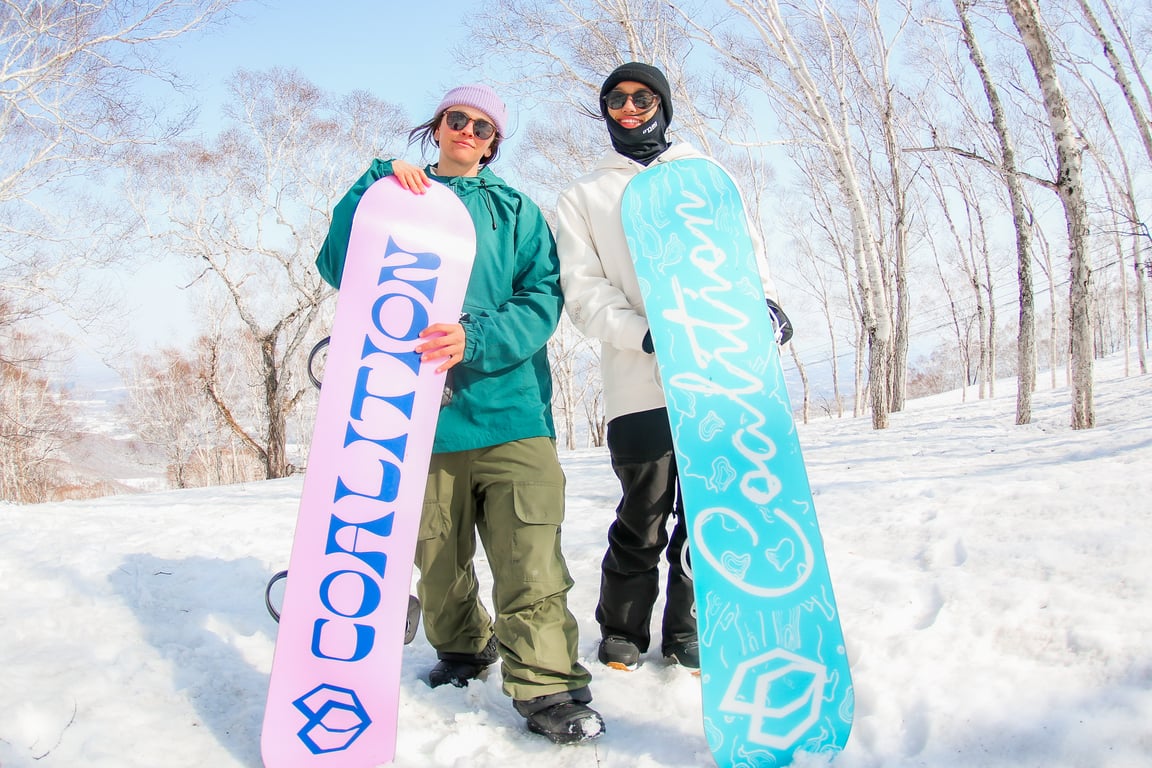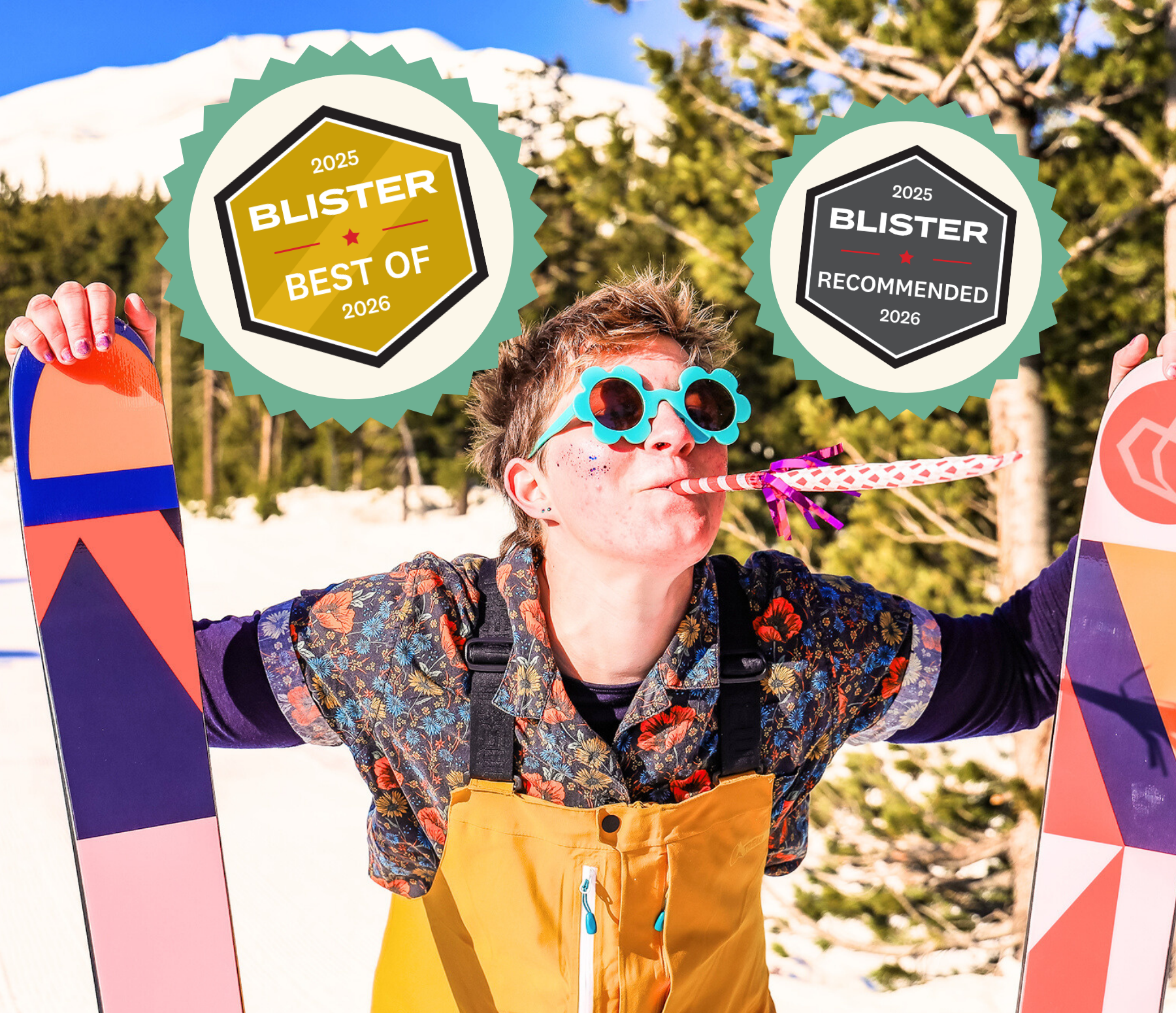Ready to drop some cold hard cash on a new pair of skis, but not sure what size is right for you? Chill, we got you.
Turns out finding the right size ski is way easier than finding the right pair of jeans because, unlike the fashion industry, which arbitrarily assigns random numbers that are supposed to indicate whether something is “small” or “large,” the snowsports industry stuck with the metric system, which is universal around the globe. Whew!
What you'll find in this blog is detailed size charts for our entire line of skis. But before we get into that, we've included some helpful answers to the most often asked questions about how to choose the right size ski.
How to choose the right size ski
The general rule of thumb when choosing the right size ski is that beginner skiers should pick a ski that comes up to their chin, an intermediate skier will want a ski that comes up to their nose, and an advanced skier will want a ski that comes up to the top of their head.
This is generally a good place to start, but weight is another and very important factor to consider when it comes to ski sizing. Typically the heavier you, are the more comfortable you’ll be on a longer ski. Someone who is 5’3” and 135 pounds might end up enjoying the same length ski as someone who is 5’5” and 115 pounds. And don't forget the rocker :)
How rocker impacts the sizing of skis
Rocker (the amount that the skis turn up in the tip and tail) reduces the effective edge (the part of the ski that is in contact with the snow), meaning you may actually want to size up, not down.
What does a longer effective edge do for you? Well, the longer the effective edge, the greater the stability when skiing at higher speeds and/or taking a more aggressive approach. The rocker in the tip and tail helps keep the ski afloat in powder or charge through crud.
Should I size up or size down?
There's an outdated narrative that women should size down. This isn’t always the case, and we wish it would go away forever. This is especially true with our skis that have a lot of rocker in the tip and tail, like the SOS and the Rafiki.
- If you choose a shorter ski, you will get more maneuverability in the trees and off-piste (that’s a fancy way of saying skiing off the groomed runs) while still being stable on-piste.
-
If you go with a longer ski, you will get more effective edge, providing you with even greater stability when you’re waiting on the powder to arrive and you are ripping laps on groomers at higher speeds.
What is “effective edge,” and how does it affect ski length?
The effective edge is the part of the ski that is in contact with the snow. Essentially, it’s the length of the ski between where the tips and tails curve up. A traditional camber ski has a longer effective edge than a hybrid camber ski, which usually has more of an upward curve in the tip and tail (referred to as early rise or rocker). A fully rockered ski has the least amount of effective edge, usually just a short section under the boot.
A fully rockered, or hybrid camber ski with a shorter effective edge is going to feel shorter than a traditional camber ski, so you’ll typically want to opt for a longer ski to make up for the difference.
What about terrain and style of riding?
We can go on and on about height, weight, and effective edge, but the most important factor is how you want the ski to feel. A shorter ski is going to feel more nimble and playful, while a longer ski will feel stronger and more stable at high speeds.
If you’re someone who prefers carving quick, short turns, skiing tight trees, and having a quick and playful ski, pick a ski that is on the shorter end of the range. However, if you’re someone who prefers high-speed straight lining, hitting cliffs and booters, and big turns in wide-open bowls, go for something longer.
A special note for beginner skiers
Your first couple days on skis are going to be awkward, and a shorter ski (something around chin height) will be much easier to manage as you learn the basics of stopping and turning, but you’re going to quickly outgrow this length and as soon as you’re ready to ski something beyond the green slopes, a shorter ski might actually start inhibiting your progress because it won’t provide the support and stability you need on a steeper run. We recommend renting a shorter ski for your first few days and purchasing something longer once you start to get more comfortable.
Similarly, for intermediate skiers, if you’ve been confidently skiing blue runs but can’t seem to find the same confidence on steeper black runs, it might be the skis that are holding you back. A shorter, softer ski, while being easier to maneuver, doesn’t provide the same support. Try demoing a longer, stiffer ski for a few days and see if it makes a difference.
In the charts below, find your ability level, height range, weight range, and then get your size recommendation for Coalition skis.
All these recs are a great starting point, but if you have any other questions, reach out to hello@coalitionsnow.com where we can offer more help to get you on the right ski length.
SOS RECOMMENDATIONS
Our SOS ski is the definition of an all-mountain ski. It rips on groomers, will slash through crud, and will float on powder. It's stiff and responsive and a ski quiver killer. It has camber underfoot and rocker in the tip and tail, which reduces its effective edge. That means it skis around 6cm shorter than its actual length. We do not recommend our SOS ski for beginners because of how stiff and wide it is. If you’re an intermediate skier, it will help you get better. If you are an advanced or expert skier, it will meet you where you are and put a big smile on your face.

REBEL RECOMMENDATIONS
Our Rebel ski is a badass carving ski. But with all skis, it’s also important to consider your geographic location with this ski. If you’re on the East Coast, it’s a great all-mountain ski. This primarily has to do with the wider shovel, or tip. Because it’s bigger than most traditional carving skis, it will slash through crud and float on East Coast powder when you get it. And ice? Pfft. The Rebel skis carve on extreme hardpack like a hot knife through butter and is ultra-stable at speed. You can say goodbye to chatter with the Rebel. If you’re in the West skiing the Rockies, the Sierra, or up in the PNW, then it would primarily be your go-to ripper for groomer laps when the snow hasn’t been flying for weeks. It also has rocker in the tip and tail, but it's not enough for those deep days.

RAFIKI RECOMMENDATIONS
The Rafiki is our powder ski, but don’t let the name fool you. It may very well become your daily driver because it’s the friendliest ski in our lineup. Is it a surfy pow slayer? Yep. Is it also fun to rip on groomers? Yep. Why? It has camber underfoot, giving you control on those groomer turns, unlike a traditional full rocker powder ski. The Rafiki also is a little softer than our SOS, so it’s just a more forgiving ski.

LA NIEVE RECOMMENDATIONS
The La Nieve is our backcountry-specific ski. It’s lightweight and nimble, has a sidecut that’s great for medium-length turns, and shines in negotiating trees and variable terrain. Because it is our backcountry-specific ski, it will not perform well on ice or firm conditions. Choosing a ski length for a backcountry ski does come down to preference, although we recommend to size down for the extra maneuverability.

LIL' HONEY YUM YUM BABY CAKE NASTY SNACK RECOMMENDATIONS
The Lil' Nasty all mountain ski is perfect for someone who wants a ski that will perform on powder days but isn't too wide for when the flakes aren't falling. We designed the Lil' Nasty to incorporate what we love the most about the SOS and the Rafiki, resulting in a super playful, super charged fun ski. The Lil' Honey is a more appropriate ski for a beginner than the SOS, but it certainly won't hold back an expert skier.

BLISS RECOMMENDATIONS
The Bliss freestyle ski is technically a park ski, but it also performs so well on groomers and moguls. It strikes a nice balance as it’s not too soft and not too stiff. It also has rocker in the tip and tail and a milder camber underfoot than the rest of our lineup, which means stomping those landings will feel real smooth. The Bliss is our only true twin-tip, so you can ski it backwards with ease, if that’s your thing.

As always, if you have any additional questions about ski length or our skis in general, reach out to hello@coalitionsnow.com where we are happy to help.




